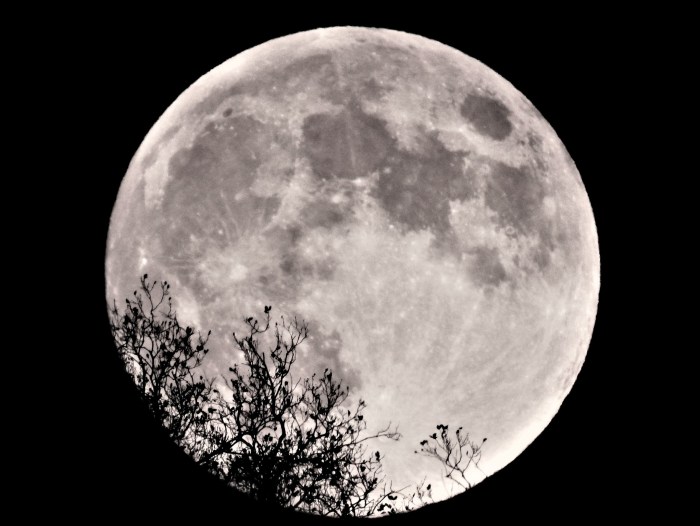AFTER a positively springlike November that contributed to 2022 being the UK’s warmest year on record, December was a very different story.

The first two weeks of the month saw the coldest start to meteorological winter since 2010, with high pressure and a cool northerly airflow resulting in a prolonged spell of low temperatures, bringing snow and icy conditions at times.

But the plummeting temperatures were accompanied by drier than average days with plenty of sunshine, allowing The Beyonder’s photographers to get out and about to make the most of the frosty mornings and chilly afternoons.

Bare branches and frozen berries provide striking patterns on early morning rambles, while the weak winter sunshine can create dramatic light effects.

Yes, there’s always fog and mist to contend with, not to mention torrential downpours and muddy footpaths where on some days it seems impossible to find any glimpse of colour to lift the mood.

But on crisper days when the ice forms delicate filigree patterns on spiders’ webs and animals’ breath hangs in the cold air, such rambles can still be a delight.

It’s a time of year when the past feels very close at hand in our ancient Chilterns landscape, where small villages sit clustered round their ancient churches as they have done for centuries, spirals of woodsmoke curling into the air as dusk falls and the inviting glow of lamps and lanterns lighting up the cottage windows.

Here, even those hallmarks of our industrial past, the railway bridges and canal towpaths, feel wholly immersed in the natural world, their weathered bricks polished and aged by time and the elements until it feels as if they must have always been here.

After two winters of pandemic worries, families were on the move at last, undeterred by the icy conditions and rail strikes from planning long-awaited reunions and travelling a little further afield than they could contemplate in 2020 or 2021.

Closer to home, if many winter walks had a slightly monochrome feel, there were always those marvellous days when the skies clear to allow a spectacular splash of colour, as they did back in 2020 when windmill enthusiast Siddharth Upadhya managed to capture the beauty of the magnificent post mill at Brill.

Meanwhile widllife photographers were looking to the trees, the sparse foliage making it easier to pick out our feathered friends, a perfect opportunity for first-time birdwatchers to begin recognising the different shapes and colours.

For those wanting to identify birds by the sounds they make, there couldn’t be a better starting point than Mark Avery’s guides to different types of birdsong, worth exploring in plenty of time ahead of the spring, when the dawn chorus starts to grow in volume and variety.

Early in the month, clear skies and the almost perfect alignment of the sun, Earth, moon and Mars allowed from some striking views of the month’s appropriately named “Cold Moon”.
For ancient civilisations, the cycles of the lunar phases helped to track the changing seasons, with different Native American peoples naming the months after features they associated with the northern hemisphere seasons (including howling wolves, which give us January’s Wolf Moon).

Wrapped up warm against the elements, a woodland wander on a winter’s evening can make it much easier to imagine how much more familiar early civilisations were with those night skies and glorious constellations.

But at this time of year even our towns have a magical festive feel, the sparkle of Christmas lights helping to lift the spirits now that the winter solstice is behind us, and nature lovers can start relishing the way that the days start getting longer from here on.

For many, this is a difficult time of year, when even nature lovers can struggle with winter depression on those short days when the sun is obscured and the landscape full of greys and browns.

But that’s when those snatched snapshots can provide a welcome foretaste of the excitement of spring, when a ray of sunlight falls perfectly on a leaf or the mist clears to suddenly leave the landscape awash with colour.

For winter ramblers, dusk and dawn are favourite times to brave the elements, not just in the hope of a spectacular sunrise or sunset but because those quiet times are also often the most promising for catching wildlife unawares.

Even when nature is looking at its lowest ebb and many creatures are dormant or hibernating, the hoot of a tawny owl, whistle of a red kite or bark of a fox or muntjac reminds us that our local wildlife is never too far away, even if we can’t always see it.

Furtive and fast-moving, or sleepy and nocturnal, our stoats and weasels, dormice and badgers are not easy to spot, but tracks in the snow and rustles in the hedgerows may give away their presence – and even our most common garden birds like robins, blackbirds and tits are all individually beautiful.

Come rain, hail or shine, our photographers are out in all weathers capturing the beauty of the Chilterns countryside, and we are enormously grateful for their evocative portraits of our local flora and fauna this December.

A big thank you to all the kind local photographers who have allowed us to use their work this month, and throughout 2022. If you would like to contribute any pictures, favourite moments or seasonal suggestions to our calendar entry for the coming year, contact editor@thebeyonder.co.uk on email or via our Facebook group page.



















